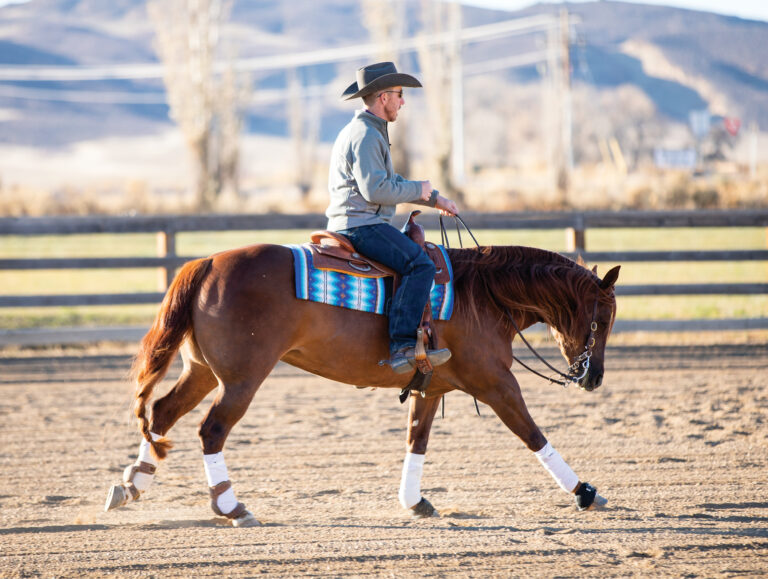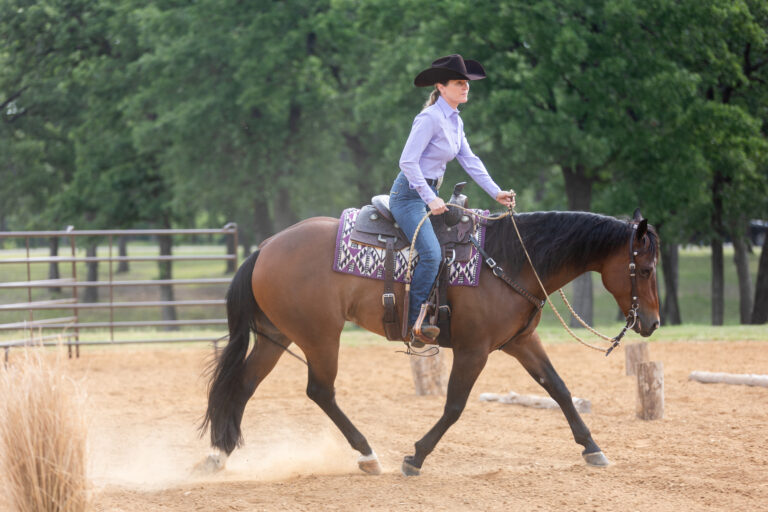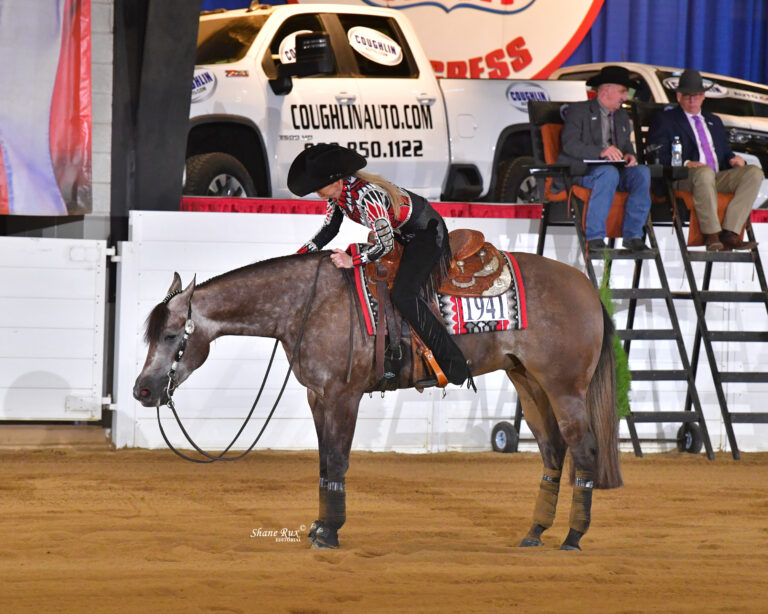In the Western riding class, a properly executed lead change will give your pattern a flow and a higher degree of difficulty that could put you at the top of the judges’ scorecards. Master this maneuver, and you can elevate an average pattern into a blue-ribbon performance. A good, soft lead change will allow you to continue the rest of the pattern smoothly.
[READ MORE: Exercise Straightness for Lead Changes]

Abigail Boatwright
But if your horse anticipates a lead change, you can accrue penalties and leave the show pen frustrated and winless. When your horse anticipates a lead change, he’s trying to give you what you want—just a bit too early. He’s giving you a response before you ask and is often trying too hard. You need to teach him to wait for your cue to change leads.
Here I’ll outline the methods you can use to reduce lead-change anticipation in your horse. First, I’ll suggest the gear to use as you start training for the lead change. Then I’ll explain why maintaining a consistent pace and encouraging forward motion are important. Next, I’ll tell you why changing leads less often will help you reduce your horse’s lead-change anticipation. Finally, I’ll give you a way to stop your horse softly if he gets too fast or too strong in practice and remind you to incorporate the pole in your lead-change training.
If you incorporate these tools into your Western riding training, you’ll have a better chance of keeping your horse honest through the pattern, waiting for your lead-change cue every time.
[READ MORE: Finesse Your Lead Changes]
Start With a Snaffle
I think the lead change is prettier and more correct when a horse’s front end is slightly elevated and his nose is out a little from the vertical. When a horse is too bridled up, he can lose his forward motion through the change.
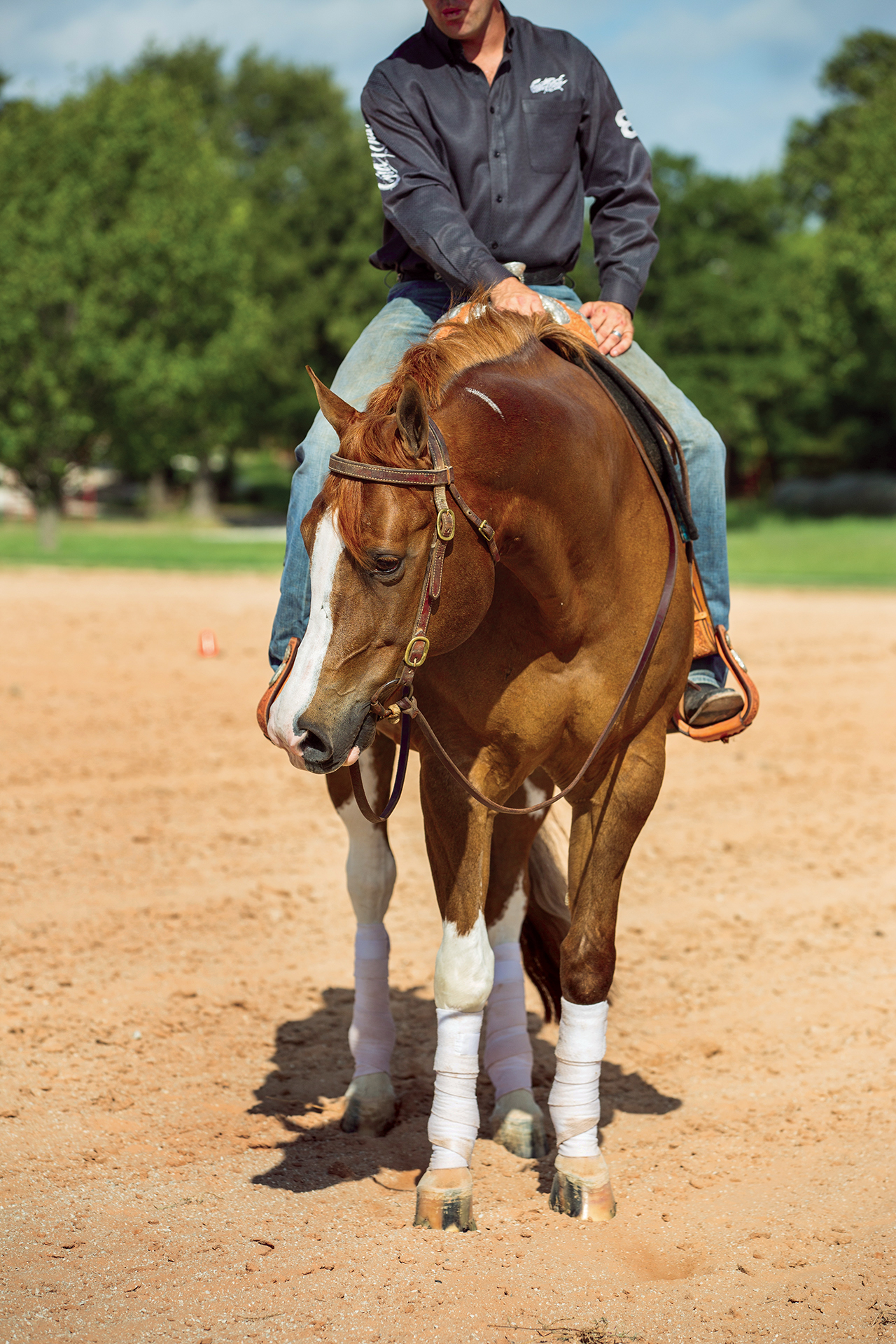
I recommend that you start working on lead changes with a snaffle bit along with a martingale, training fork, or draw reins to maintain consistent control while staying soft in your hands throughout this training’s beginning steps. When you can perform these maneuvers on a tighter rein, loosen your reins to gain confidence riding with less contact during lead changes, then move up to either a correction bit or a bigger bridle for one-handed work.
If you typically use a shanked bit with a small port, that’s a good option—but only after you’ve mastered these techniques with a snaffle. Once your horse has mastered the lead change, you can experiment with different bits, depending on his needs.
Maintain a Consistent Pace
One of the most common lead-change challenges is maintaining a consistent pace. I often see riders erratically change speed throughout the pattern, speeding up right before each change to set up their horse, then drastically slowing down after the change to maintain control.
Your goal is to maintain a consistent pace before, during, and after each lead change for a better, prettier change than if your pace is erratic.
To steady your pace, look up and ahead. Know where you are in the arena and in relation to the pattern’s cones. If you look down, you can lose track of how fast you’re going.
Also, count your horse’s strides as you move around the arena—count “one, two, one, two” or “one, two, three, four.” Counting strides will help you notice whether you’re speeding up or slowing down too much.
Note that if your mount is a former Western pleasure horse, you’ll likely need to focus more on pushing him through the pattern, rather than holding him back.
[READ MORE: Lead Change Precision]
Encourage Forward Motion
Practice riding with speed so work around a lead change isn’t the only time you ask your horse to increase his pace. This technique will help you maintain the same pace throughout your entire Western riding pattern.
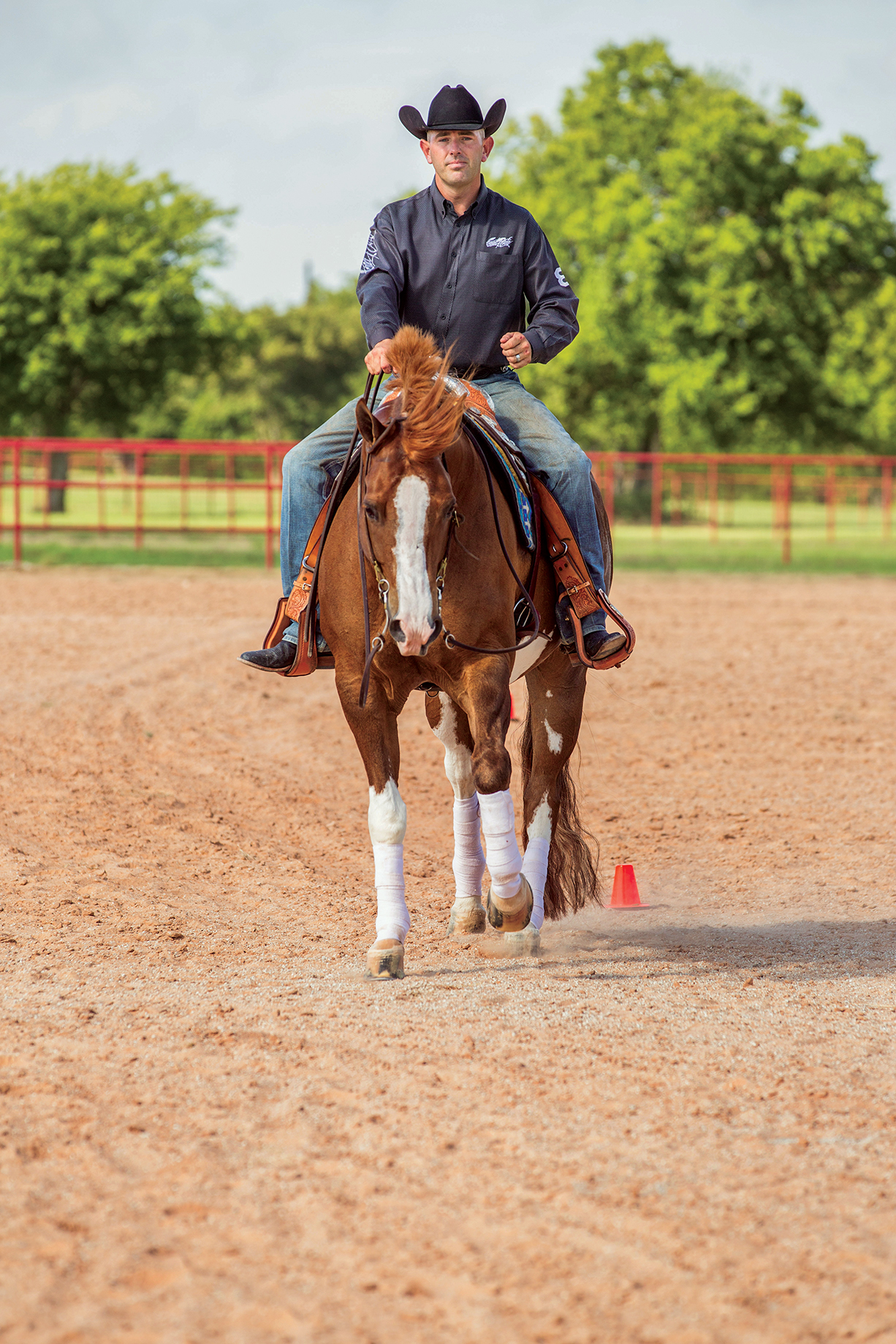
Abigail Boatwright
It’s important to ride a Western riding pattern with a slightly increased pace. Horses need momentum to change leads correctly, but you need to maintain the same pace throughout the pattern, so you need to practice at that pace.
To reduce anticipation, practice setting up for a lead change at the correct speed, but continue forward without changing leads. Practice the setup and the lateral movement discussed earlier at that bigger Western riding pace.
As you start your training session, get up to the increased pace you need, then maintain that pace throughout the session. Develop a consistent voice command—such as a cluck or a kiss—that your horse recognizes as permission to go forward and continue to go forward.
Change Less Often
They say it takes two weeks to teach a horse to change leads and the rest of his life to teach him not to change. It might sound counterproductive, but to minimize lead-change issues, practice the setup more often and change leads less often.
In the practice pen, for every time you go down the long line of cones in a Western riding pattern and complete all four lead changes, go down that same line and don’t change once. Use your legs and keep your same pace, but don’t cue for a change. You can do this at any point in the arena—just keep your horse on the same lead, counter-
cantering if necessary.
Working on setting up your horse for the lead change will be far more beneficial for you than changing leads every time. I’ll set up for a change two or three times, perform a change once, then set up for a change about six times before I change again.
To set up for the lead change, you’ll shift your horse’s body weight over onto his lead legs. For instance, if you’re on the right lead, you’ll ask him to move much of his body weight on his right legs.
To accomplish this shift, ask your horse to move laterally into the current lead, keeping his body straight from poll to tail. Known as a two-track or leg-yield, this move encourages him to put his weight onto the lead legs in order to set up for a change.
To move your horse over, press with your left, outside leg—that is, the leg opposite the lead he’s on—while guiding him straight with your reins. The moment you feel him put more weight on his lead leg, remove left-leg pressure, and press in with your right leg to change to the left lead. You want to feel him take a bigger step with his left legs, which will become his new lead legs if you continue to ask for a lead change.
[READ MORE: Learning Lead Changes]

undefined
BOTTOM: While practicing a correct lead change is important, preventing anticipation of the change is just as imperative to a successful pattern.
Abigail Boatwright
When you feel that your horse is pushed over onto that lead leg enough that he could switch leads, you’ll be ready to ask for the change. If he’s light-sided, this could be a subtle move. If he’s duller-sided, you’ll have to ask for it harder. Your cues will depend on your horse’s sensitivity.
To reduce lead-change anticipation, move through the whole set-up process without even thinking about changing leads. Once you feel as though it’s the perfect time to change leads—don’t do it. Continue loping on. Set up for the change at intervals, but don’t actually ask your horse to change leads. Throw those cues into your daily training session, even if you’re not practicing changing leads that day.
Horses are creatures of habit. They like to walk the same path to water every day. So when you train your horse, consistency is key. Perform the setup over and over without changing leads, and your horse will eventually stop anticipating the change.
Stop Him Softly
If your horse gets too fast or too strong as you work on the lead change, stop him softly rather than pulling him into a hard stop. I call this “melting to a stop.”
To do this, say “whoa,” stop riding, loosen your body, take your feet out of his sides, and let him trickle down to a halt mid-pattern. Melt into a stop that’s comfortable for him, then ask him to sit for a bit to help him maintain his composure. Take a breath, then ask for a return to the lope.
I advise against using a spur stop (where your horse stops in response to the application of spur pressure). Western riding is a forward-moving class; an aggressive spur stop can impede forward energy needed to complete the pattern correctly.

Abigail Boatwright
Practice the Pole
Incorporate the pattern’s pole into your lead-change training, so your horse will become accustomed to performing the lead change then going over the pole as the pattern indicates.
That one pole in Western riding is so important; it can make or break you. Horses can often lope a pole at trail-class pace, but when you’re riding at Western riding pace, the timing and spacing are different.
In trail, the space you have to maneuver is usually more confined, due to other obstacles. You’re not moving with as much forward motion as you are in Western riding.
As you work on lead changes, practice setting up and loping over the pole at the Western riding pace. Your eye needs to get used to a bigger stride for an extended pace, versus the six-foot stride typical for trail.


